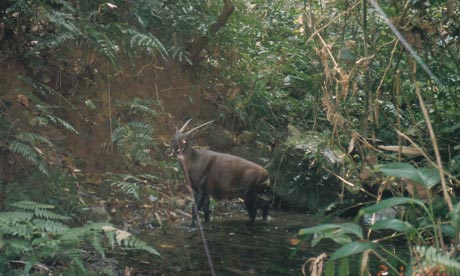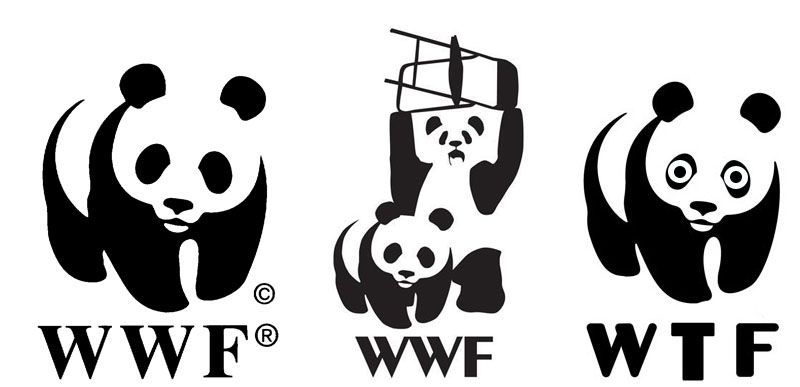
Poaching in Vietnam and Laos may be driving the "Asian unicorn" to extinction, warns the WWF on the twentieth anniversary of its discovery.
The saola is an antelope-like reclusive species that lives in remote regions of the Annamite mountains on the border of Vietnam and Laos, dubbed the Asian Unicorn because it is so rarely seen. It came to worldwide attention in 1992 as the first large mammal to be discovered in over 50 years when surveyors from the Vietnamese Ministry of Forestry and the WWF found skulls of the unknown species in mountain villages. DNA tests have indicated it is a bovine related to cattle, though it resembles a wild goat or antelope with two parallel horns found on both males and females.
Now the WWF and conservation groups say populations of the saola is dropping. Estimates of the current saola population range from 10 to several hundred. A 2009 meeting of the International Union for Conservation of Nature (IUCN) concluded that the species population has dropped precipitously, and the saola remains on its list of critically endangered species.
While the WWF does not know the exact population number of the saola, WWF Asian species expert Barney Long said there are indications the population is likely dropping. Interviews with communities have indicated sightings of the saola have dropped over the past 20 years. Poaching in the Annamite mountains has also reached epidemic levels, and though the saola is not sought after by hunters, the horned beast is nevertheless caught in their snares.
"Poachers go in and set 1,000 snares at a time. It's high-intensity poaching which requires an appropriate response form anti-poaching teams. That's extremely difficult to fund and logistically organise," said WWF Asian species expert Barney Long.
In one park in central Vietnam, where the WWF has begun to work with community forest guards, 200 illegal hunting camps have been closed and 12,500 snares removed since February 2011.
Poaching in the mountains has been the by-product of economic development in Vietnam, said Long. The growth of the country's middle class has driven demand for rare, wild-caught cuisine among the country's middle class.
"An increasing number of people going to restaurants and buying splashy meals. If you're trying to impress your business partners especially around festival seasons, then you take them out for expensive dinners. A great way to kind of show off and be a status symbol is to eat status meat."
The Annamite mountains are home to 42 ethnic groups, according to Long, each with their own culture, language, and hunting practices. Since 1992, the animal has mainly been sighted by scientists with camera traps. One was captured by villagers in Bolikhamxay province, Laos in 2010, but it died in captivity before researchers could reach the village. No scientist has spotted the saola in person.
The habitat of the saola makes the species very difficult to track but also to protect. The animal resides in very specific and remote pockets of a mountain range Long described as an already "very remote, very steep, very wet, very difficult terrain."
Story Here











